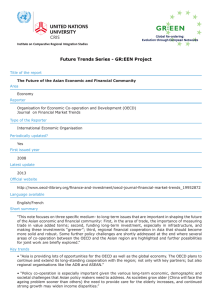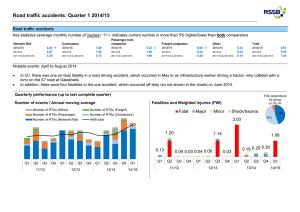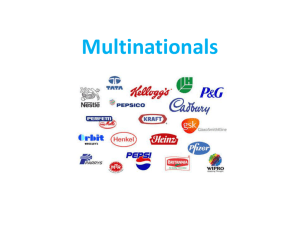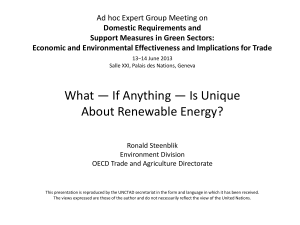Measuring the Cost of International Trade in Services
advertisement
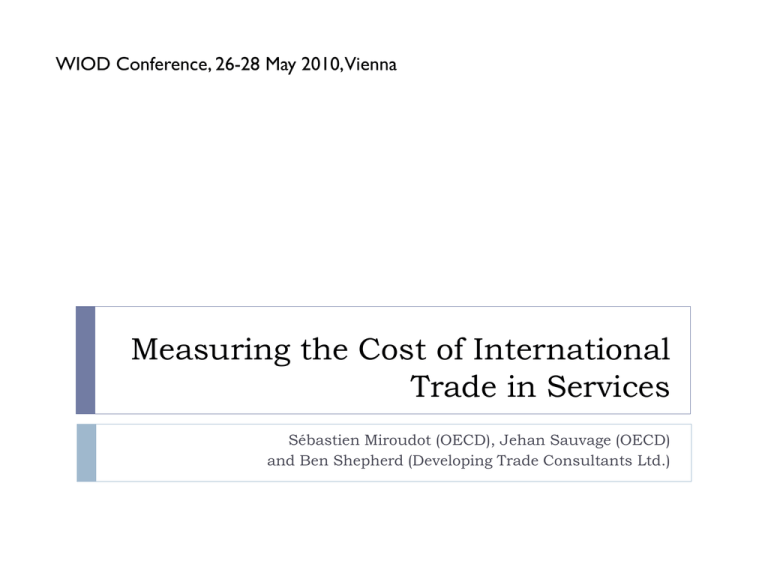
WIOD Conference, 26-28 May 2010, Vienna Measuring the Cost of International Trade in Services Sébastien Miroudot (OECD), Jehan Sauvage (OECD) and Ben Shepherd (Developing Trade Consultants Ltd.) Why focusing on trade costs in services? Services represent two-thirds of economic activity but trade in services is less than 5% of GDP (as opposed to 20% for goods). Services are less “non-tradable” than in the past. Trade costs should explain why services are less traded. Definition of trade costs: the full range of costs a firm confronts when it decides to sell its services overseas. Quantification of barriers to trade in services: top-down versus bottom-up approach Observation of empirical data Services Trade Restrictiveness Index (STRI) Estimate discrepancies in prices or trade flows Weights How important is each measure? Empirical index number Scores Assigning numbers to observed policies Relation to policies How much does each measure contribute to the index? Observation of policies Which to include? A theory-consistent measure of trade costs (Novy, 2009) Based on the standard Anderson and Van Wincoop (2003) gravity model. Trade costs are calculated as the geometric average of bilateral trade costs for exports from country i to country j and from country j to country i, expressed relative to domestic trade costs in each country. The equation below presents this measure in ad valorem equivalent terms: 1 2 tij .t ji xii .x jj ij 1 x .x t . t ii jj ij ji 1 2 ( 1) xii .x jj 1 x .x ij ji 1 2 1 Trade costs in services, 1995-2007 We construct Novy (2009) measures of trade costs in services for up to 61 countries and 12 services industries. We also compile data for 17 goods sectors as a point of comparison. In all calculations, the elasticity of substitution sigma is set equal to 8 (equivalent to gamma = 7, a reasonable assumption for firm-level heterogeneity). Data sources: Intranational trade flows (domestic output minus exports): EU Klems, OECD Stan and OECD I/O tables, complemented with national data. Bilateral trade flows: OECD ITCS (goods) and TISP (services) database. Comparison of trade costs in goods and services USA vis-à-vis major partners (2000, per cent ad valorem equivalent) World aggregate trade costs indices, 1995-2007 (1995=100) China trade costs indices, 1995-2005 (1995=100) Trade costs indices for selected services industries Trade costs and regional trade agreements Trade costs within and outside services RTAs Overall trade costs Services industries Trade costs and RTAs: regression results Trade costs and productivity Concluding remarks Strong evidence that trade costs in services are much higher than in goods: two or three times higher. Trade costs in services have remained stable over the last decade. Lack of services trade liberalization? China’s experience and results for RTAs suggest that trade policies can reduce trade costs. Services sectors facing lower trade costs tend to be more productive and have higher productivity growth. Next steps: Expand the dataset Decompose overall trade costs into those amenable to policy action and those “non-compressible”. Distinguish between fixed and variable trade costs.



